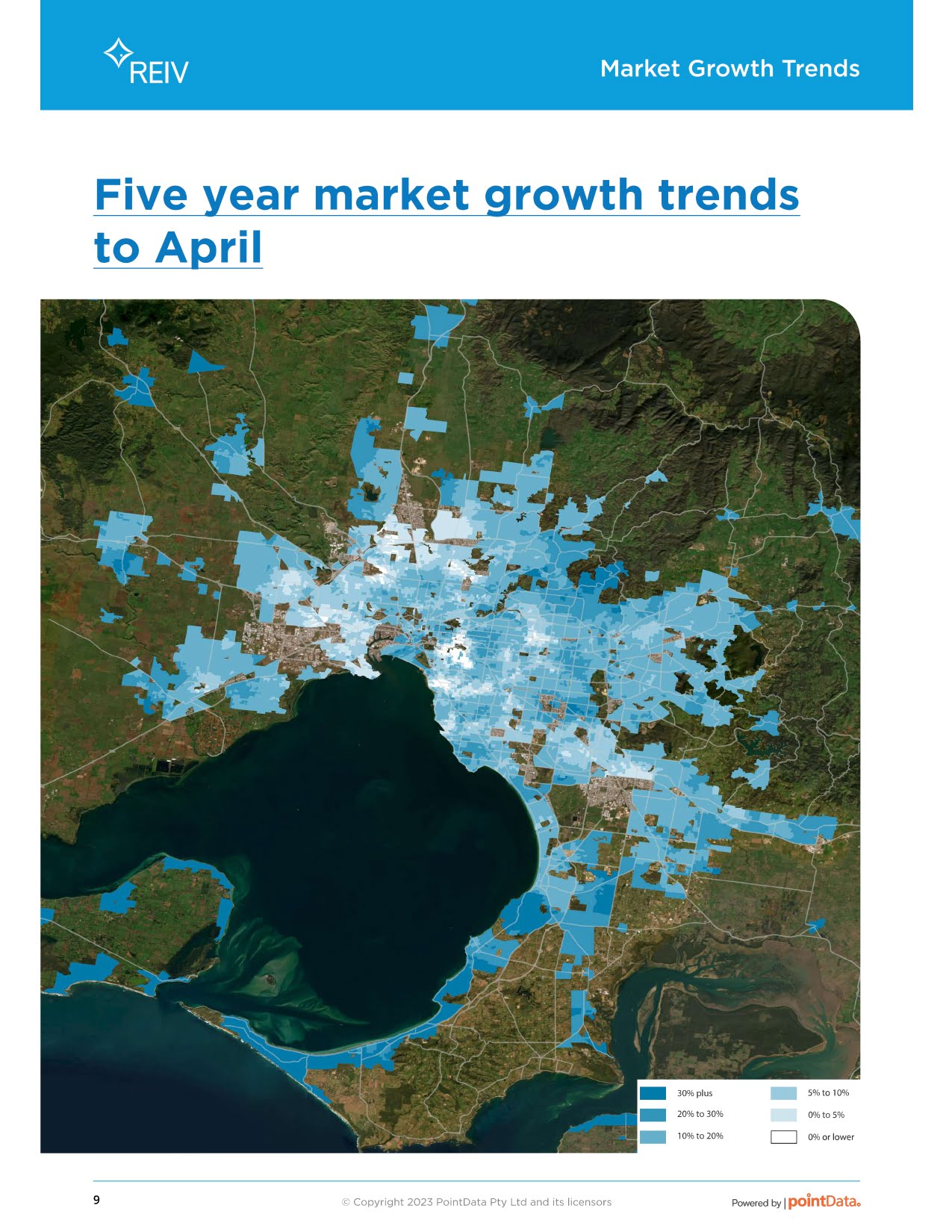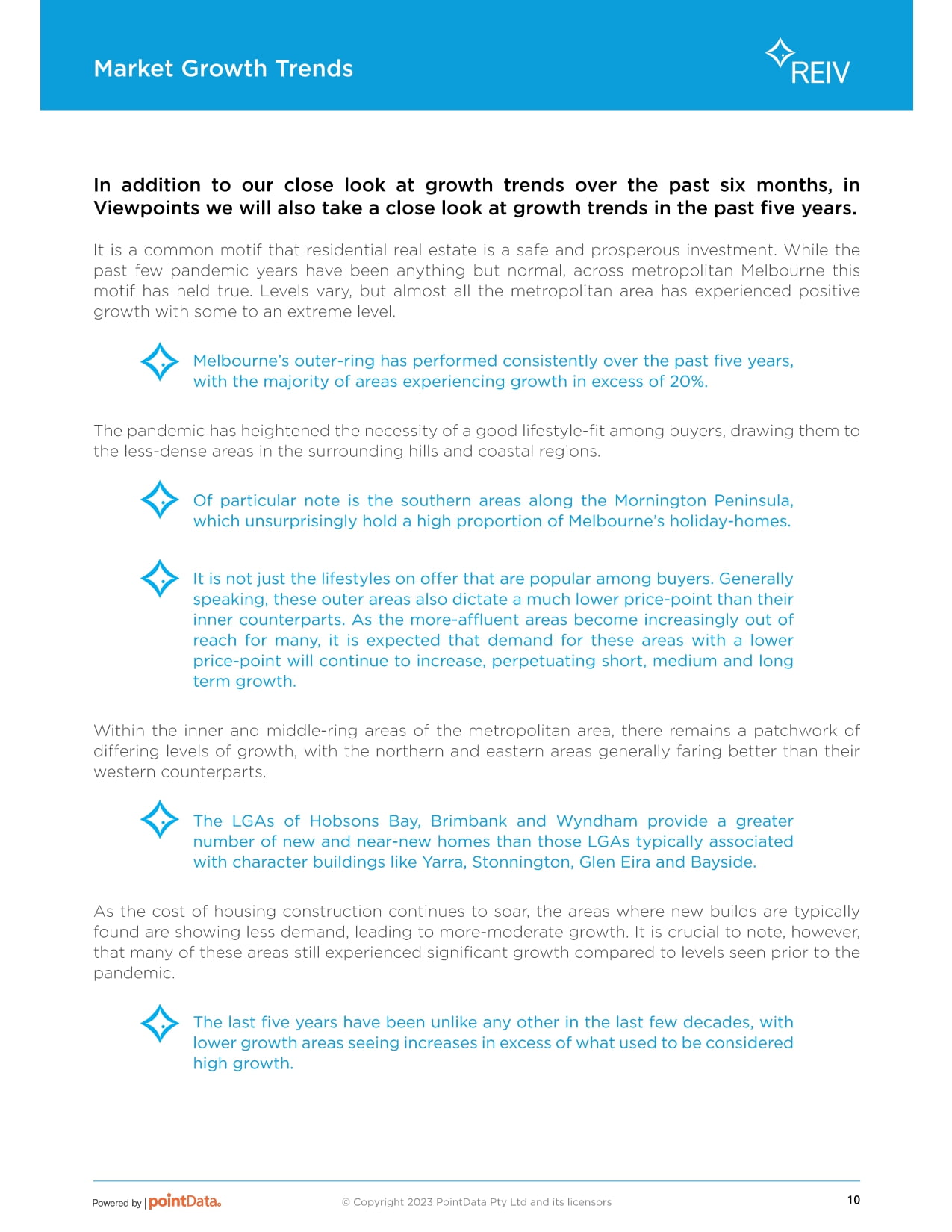

Five-year market growth trends to April
In addition to our close look at growth trends over the past six months, in Viewpoints, we will also take a close look at growth trends in the past five years.
It is a common motif that residential real estate is a safe and prosperous investment. While the past few pandemic years have been anything but normal, across metropolitan Melbourne this motif has held true. Levels vary, but almost all the metropolitan area has experienced positive growth with some to an extreme level.
- Melbourne’s outer ring has performed consistently over the past five years, with the majority of areas experiencing growth in excess of 20%.
The pandemic has heightened the necessity of a good lifestyle fit among buyers, drawing them to the less-dense areas in the surrounding hills and coastal regions.
- Of particular note are the southern areas along the Mornington Peninsula, which unsurprisingly hold a high proportion of Melbourne’s holiday homes.
- It is not just the lifestyles on offer that are popular among buyers. Generally speaking, these outer areas also dictate a much lower price point than their inner counterparts. As the more affluent areas become increasingly out of reach for many, it is expected that demand for these areas with a lower price point will continue to increase, perpetuating short-, medium-, and long-term growth.
Within the inner and middle-ring areas of the metropolitan area, there remains a patchwork of differing levels of growth, with the northern and eastern areas generally faring better than their western counterparts.
- The LGAs of Hobsons Bay, Brimbank, and Wyndham provide a greater number of new and near-new homes than those LGAs typically associated with character buildings like Yarra, Stonnington, Glen Eira, and Bayside.
As the cost of housing construction continues to soar, the areas where new builds are typically found are showing less demand, leading to more moderate growth. It is crucial to note, however, that many of these areas still experienced significant growth compared to levels seen prior to the pandemic.
- The last five years have been unlike any other in the last few decades, with lower growth areas seeing increases in excess of what used to be considered high growth.



